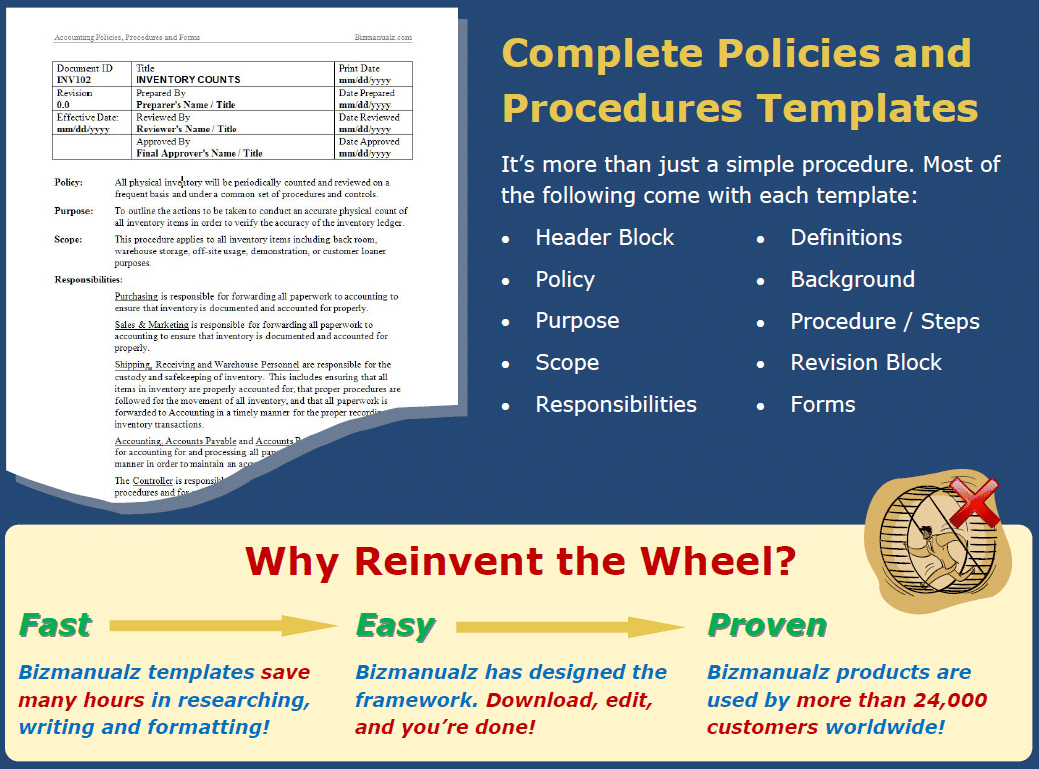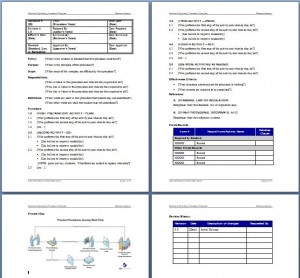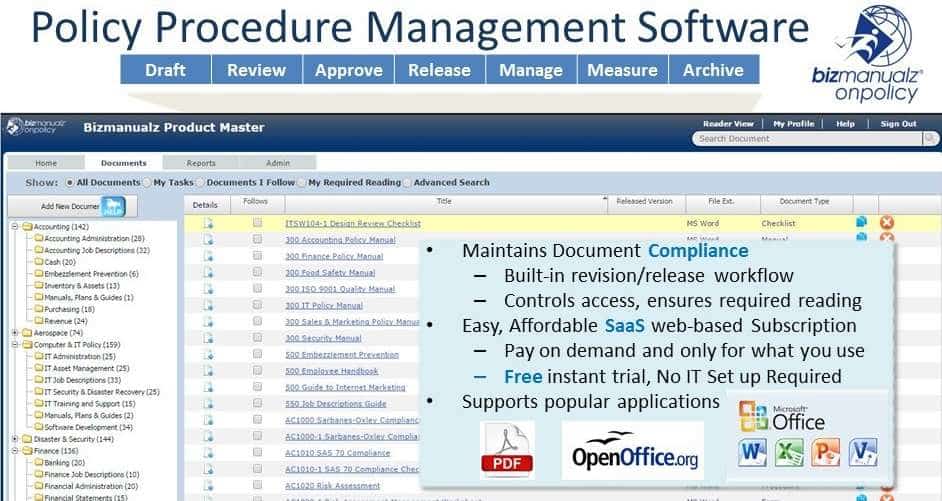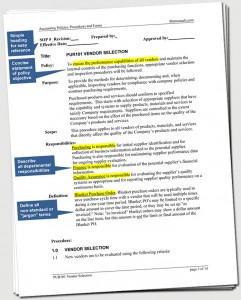How Do You Make Policies and Procedures Work?

How can you make your policies and procedures work? Customers and readers alike tell us how difficult it can be to keep their policies and procedures up to date. Due to the ever-increasing rate of change, your policies and procedures can get “stale” (ineffective) very fast. What else goes wrong with procedures?
Why Don’t My Employees Follow Procedures?
There are a lot of reasons for people not following procedures. Here are some of the most common.
How long should a standard operating procedure be?
One reason for this might be that your standard operating procedures (SOP) are too long. If you have 35-page-long procedures — especially if that’s all text — it’s probably not fair to expect your employees to understand, let alone use, them. At that length, there’s the very real risk that your procedures are unclear, overly complicated, and just plain boring. Keeping procedures short and under seven pages will help in understanding and usage.
Out of Date Procedures
Another reason procedures may not be up to date is that they’re not followed. If your people were using the procedures as written and taught, they’d be more likely to notice when things are out of date or out of sync with other company practices. Revisions are a healthy indicator of ongoing use and revisions help to create effective procedures. If procedures that are written on with notes and comments are candidates for a procedure update.
Can’t Find Procedures
Perhaps your people can’t find your procedures, or possibly they’re unaware that you have a procedure for this or that activity. Maybe because it’s not right in front of them, they’re assuming you don’t have a formal procedure. Nonexistent or uncontrolled procedures imply that your quality management system is out of control. Consider using procedure management software to automate your procedures and include a search function for easy retrieval.
Procedures Are Too Simplistic
There’s also the possibility that your procedures are too simple; that is, they’re too broad and general to suit a specific situation. If your procedures aren’t directly to the point and don’t offer information specific to the process your employees are working on, they won’t be used. Consider simple procedures for deletion or add more information to improve the procedure.
Poorly Written Procedures
Poorly written procedures are as bad as generic simple procedures. If your procedures are incorrect or confusing, your employees will not use them, either. Consider hiring a technical writer to at least edit your procedures.
Poorly Designed Procedures
Sometimes, procedures are not designed for ease of use. Either they’re hard to navigate in themselves, or their formats are inconsistent. Formats that are inconsistent across departments and work areas are a frequent source of confusion. Consider using a procedure style guide to standardize your procedures.
Who are Procedures Written for?
It helps to think about who procedures are written for when designing your procedures. Procedures are primarily designed to be training aids: Frequent, experienced users don’t need procedures often, if at all. They should periodically review procedures to be sure they’re current but on a day-by-day basis, they’re not your target.
Occasional users need reminding, but it’s novice users who need procedures the most. They’ll need the guidance of a procedure until the process has become ingrained.
How to Make Your Policies and Procedures Work
To understand how to make your procedures work for your employees, you need to pay careful attention to the following:
- Develop a system that keeps your procedures current using intranets, social media constructs (blogs, wikis, etc.), document management systems, software, or new knowledge management systems.
- Keep your procedures concise, clear, and to the point — no tangents or extraneous material.
- Use pictures, graphics, and examples to illustrate objectives.
- Make your procedures available where they’re needed most.
- Develop a system with easy access (see point #1, above), make them searchable online, or make them part of the job (see #4).
- Revision control is required for ISO and must be part of the job (see #1 & 4).
- Eliminate generic procedures entirely.
- Keep procedures updated and useful (also see #1 & 4).
- Create and maintain a common, easy-to-navigate format for your documents.
- Instill the discipline to follow procedures in your organization by making the process “owners” part of the procedure development.
Now that you know the secret to writing effective (i.e., useful) policies and procedures, what are you waiting for?


















Hi,
What is the difference between Policy in the Procedure Template and the stand alone policy document?
Regards
Greg
Templates are made to create a structure, style, and format for your policy documents. They contain headers, margins, fonts, and indicate where process maps are used, references are included, and outline what control are used.